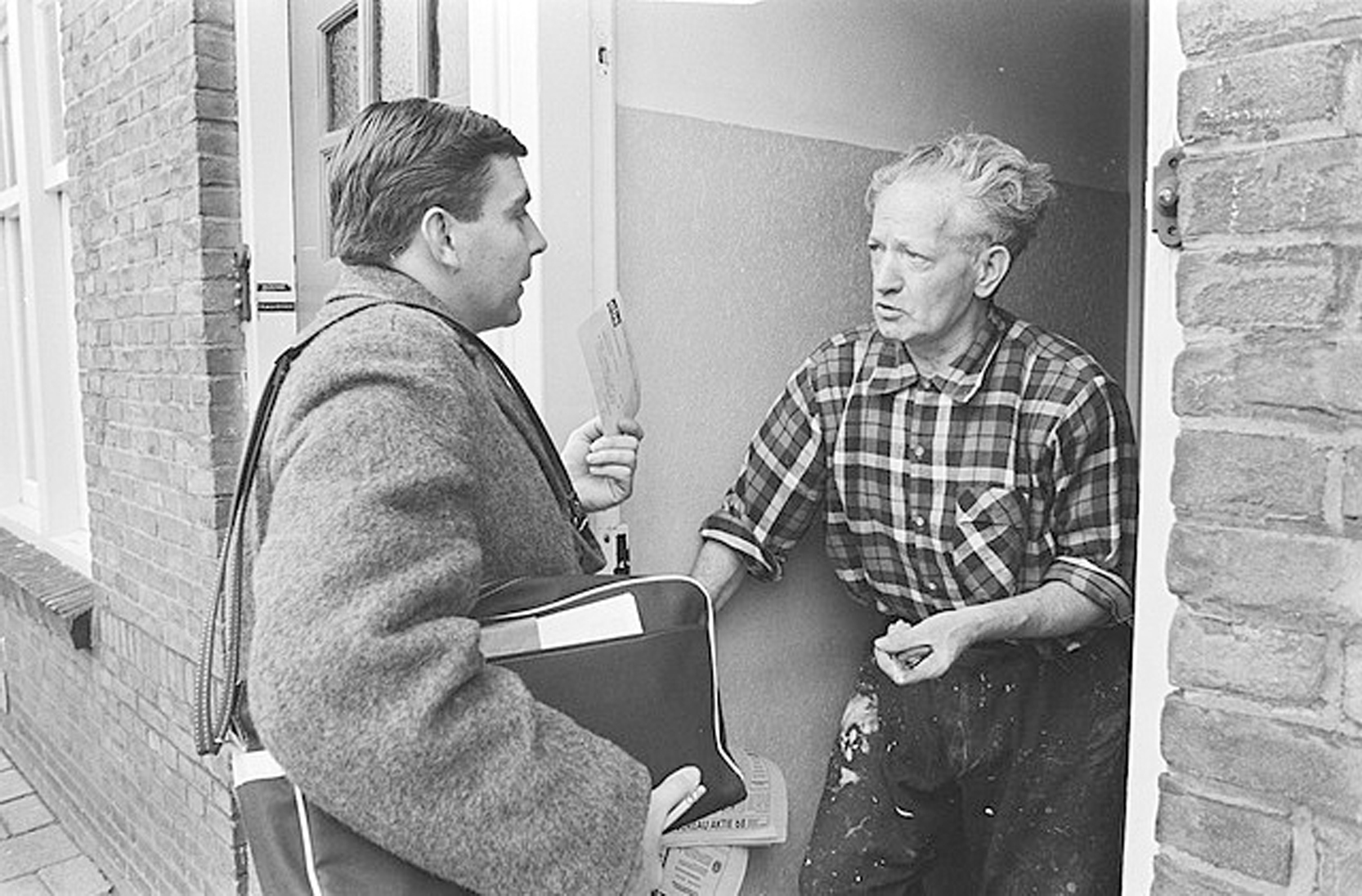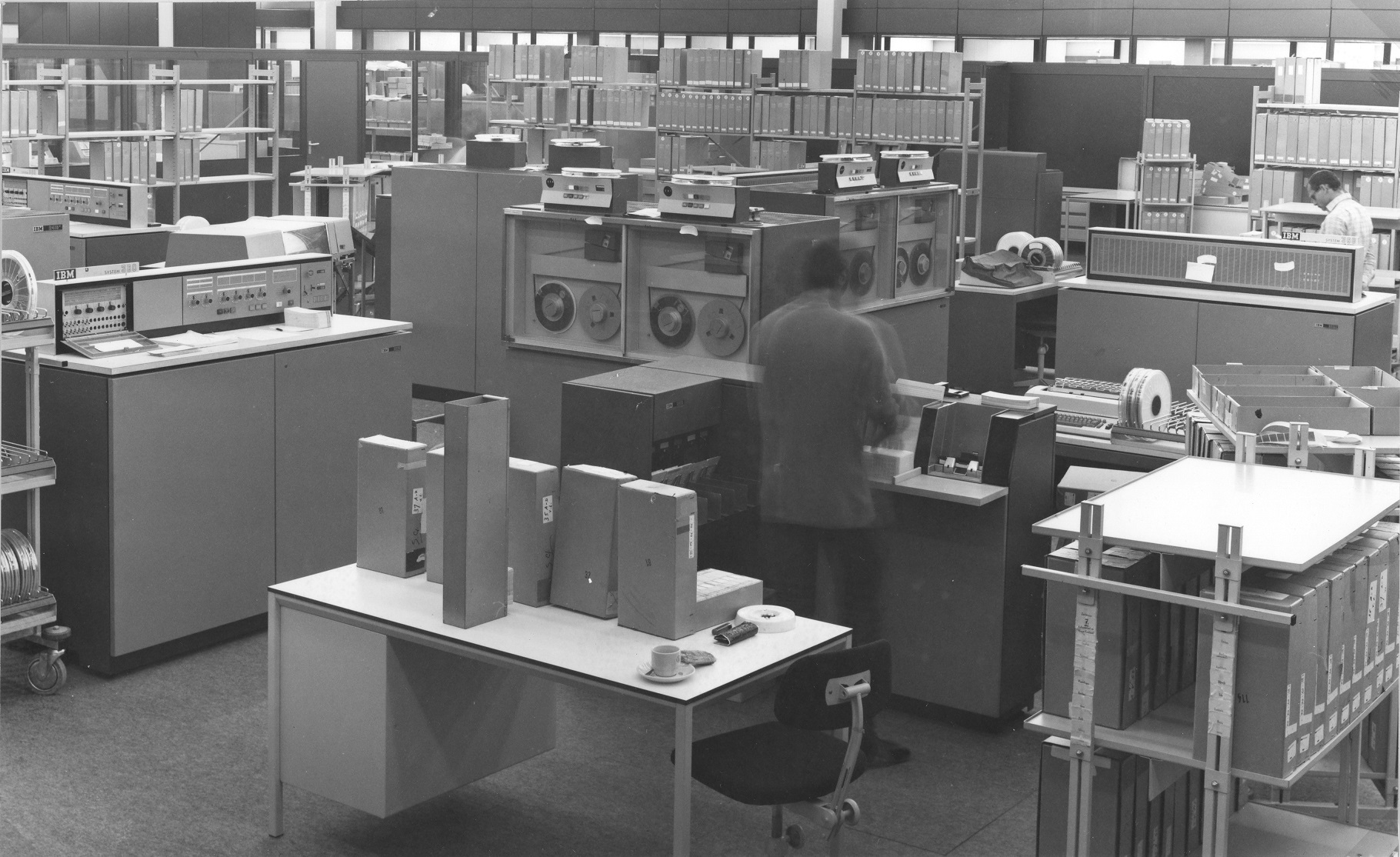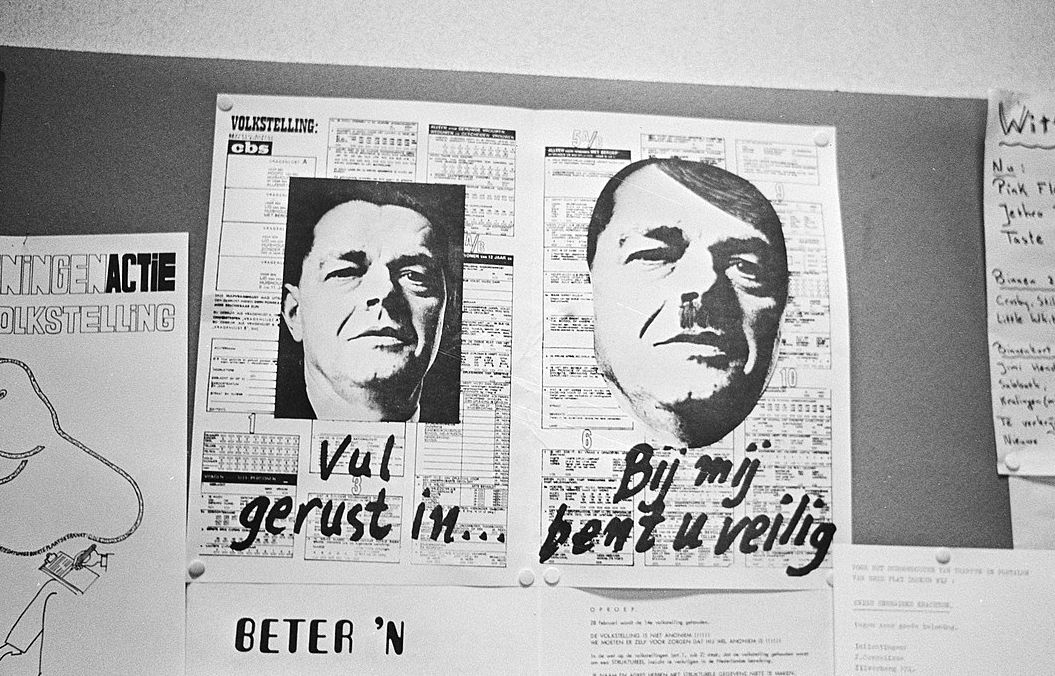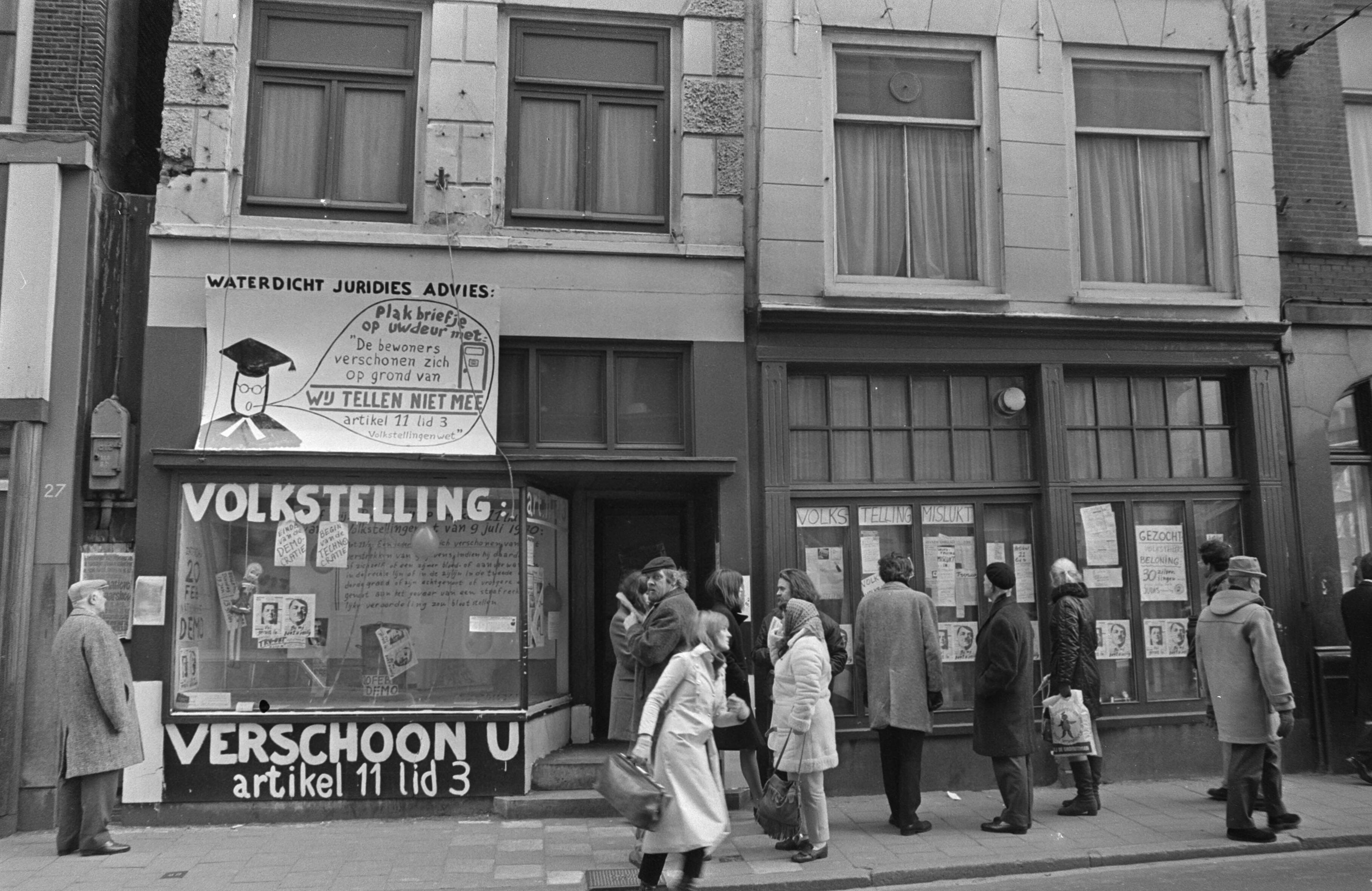1971
Census forms burned in the street
CBS launched a communication offensive to highlight the importance of the census. Leaflets were delivered to four million households, television and radio broadcasts informed the public about the census, radio commercials lasting several minutes were broadcast, and a longer programme in seven languages targeted migrant workers. The plans for processing the responses were just as ambitious: CBS would use a computer for the first time, a Philips P1400. People answered multiple-choice questions by colouring in their answer options, and once the responses reached CBS, those black spots were identified by optical readers designed by IBM and saved to the computer memory – no human punch card counters required.
Anonymity
But the census plans met a tsunami of resistance. One serious problem was that the census would no longer be anonymous, as people would have to give their names so that the raw data could be corrected against information from the population registry. This would prove to be an unfortunate gap in the census planning project. The discussion of the census turned into a major public debate about privacy, and this coincided with the publication of the plans by the Westerhout Committee to introduce a central register that would assign an individual number to each and every Dutch person.
A people sorting machine
One key player in the resistance to the new census plans was the Comité Waakzaamheid Volkstelling (Committee for Census Vigilance), which was founded in September 1970 and which organised discussion events all over the country. In the first place, the Comité saw no need for the count to take place at all. As excellent population data were already available through population registers, a sample survey of those data would suffice. Moreover, they thought questions about things like belief systems, disabilities and income details were too personal. Their third objection was that it was impossible to take part anonymously as everyone’s name and address would appear on the cover page, so the survey answers could be traced directly back to individuals. The Comité also claimed that it was dangerous to use a computer for data processing, describing computers as ‘people-sorting machines’.
A democratic and statistical noose
Martin van Amerongen wrote an article on the census plans for the weekly magazine Vrij Nederland, which had begun as a Resistance publication. The article, published on 17 October and headlined ‘Dutch noses are being counted’, marked the start of what CBS viewed as ‘the press campaign against the census’. In his piece, Van Amerongen recalled that the deployment of workers and the implementation of the solution to the ‘Jewish question’ had been flawless during the war, ‘thanks to the well-oiled machine of our population registry’. He described the census material as lethal.
At a panel discussion about the census some weeks later, in the RAI building in Amsterdam, publicist Arthur Lehning took the floor and stated that this census was leading us towards a totalitarian society, and ‘that we are being forced to place our heads in a democratic and statistical noose’.
CBS Director J.C.W. Verstege, also present at the discussion, expressed his disbelief to the audience: ‘Ladies and gentlemen, there is unrest in the country about the next census, and that is your fault!’ He didn’t understand the objections to using a computer, comparing them to the creation of a psychosis of fear, and he called on people to recover the renowned Dutch common sense. The newspapers agreed that Verstege’s contribution had only fanned the flames of the resistance.
Campaigns both fun and sinister
In January 1971, no fewer than 25 organisations called on the public to boycott the census. Some campaigns had an element of fun, such as the burning of census forms (Photograph 3) and the Red Youth movement designating 28 February 1971 a day of nationwide sabotage. People were encouraged to telephone a member of the Dutch parliament and ask them questions about their private life, and sinister campaigns. A poster appeared depicting Interior Minister H.K.J. Beernink with a Hitler moustache (Photograph 5), and the Humanistisch Jongeren Sentrum (Humanist Youth Centre) sold yellow Stars of David showing the national emergency number 777. One poster for this campaign featured the following text: ‘It’s happening again. Again, people are being registered!! Wear the star before you’re forced to: get yours here!!!’
Administrative count
On 12 February, Minister of Economic Affairs R.J. Nelissen had to bow to pressure and make promises. Details about vulnerable groups would be deleted after six months, and the children of Jews and Resistance fighters who refused to comply would not be prosecuted.
In the end, CBS received no survey data from almost 300,000 people – 2.3% of the population – although the missing data were recovered later from the municipalities (the ‘administrative count’), and added to the census material. Most non-respondents were simply not at home on the day of the census. In the end, despite all the commotion beforehand, only a tiny number of people actually refused to participate: just over 23,000, or 0.2% of the population.
Sufficient information
The census generated sufficient information in almost all areas, apart from religious affiliation and profession, aspects which were not reliably recorded in the population registries. The initial provisional outcomes were published over the course of 1972, with the first core tables appearing in 1975.
The ambition for the data to become more relevant to policy planning meant that there was close cooperation with university researchers, right from the start. Themed studies based on 1971 census data were edited by CBS and the Inter-university Institute for Social Science Research Foundation (SISWO) and published in the form of census monographs. A total of 18 monographs appeared, starting in the fourth quarter of 1978.
Housing crisis persists
The housing situation had improved significantly since 1947, and housing occupancy (people per house and per room) had plummeted. The number of people per house fell from 4.33 (1947) to 4.07 (1956) and 3.37 (1971), with the number of people per room falling from 0.90 (1947) to 0.80 (1956) and 0.64 (1971). CBS noted that there was still a housing shortage, but that it was much less severe than it had been, a situation that meant it was now possible for many single people to find a home.






